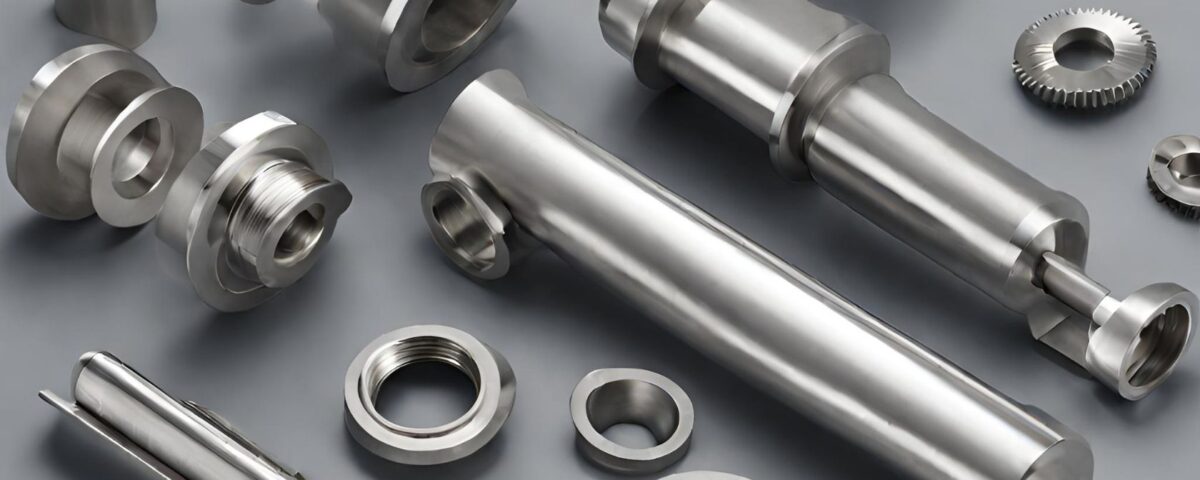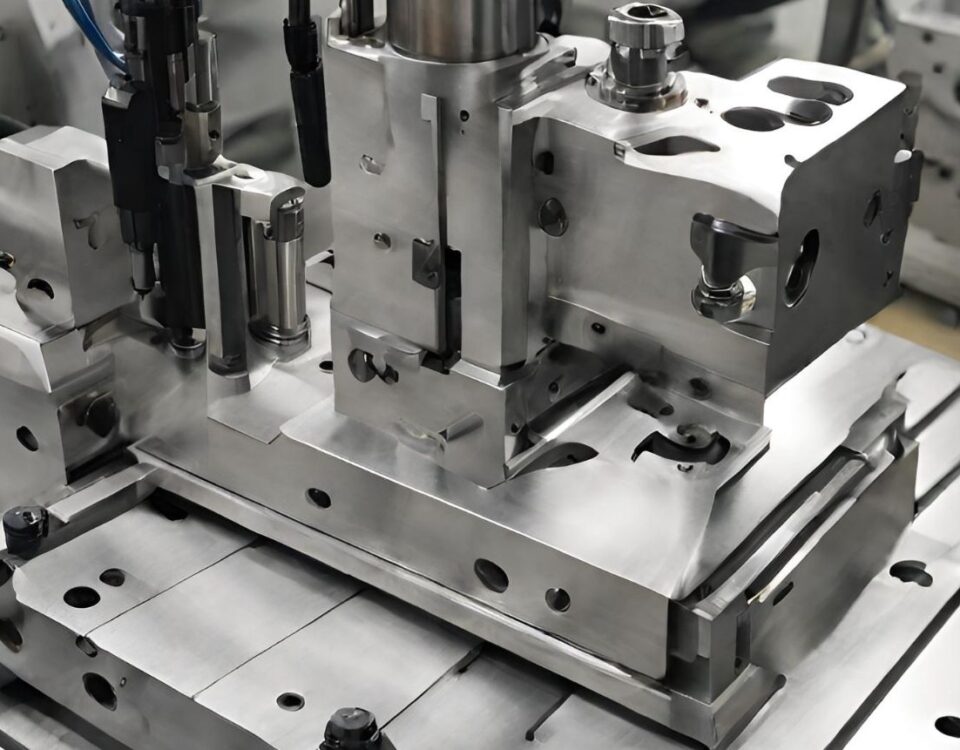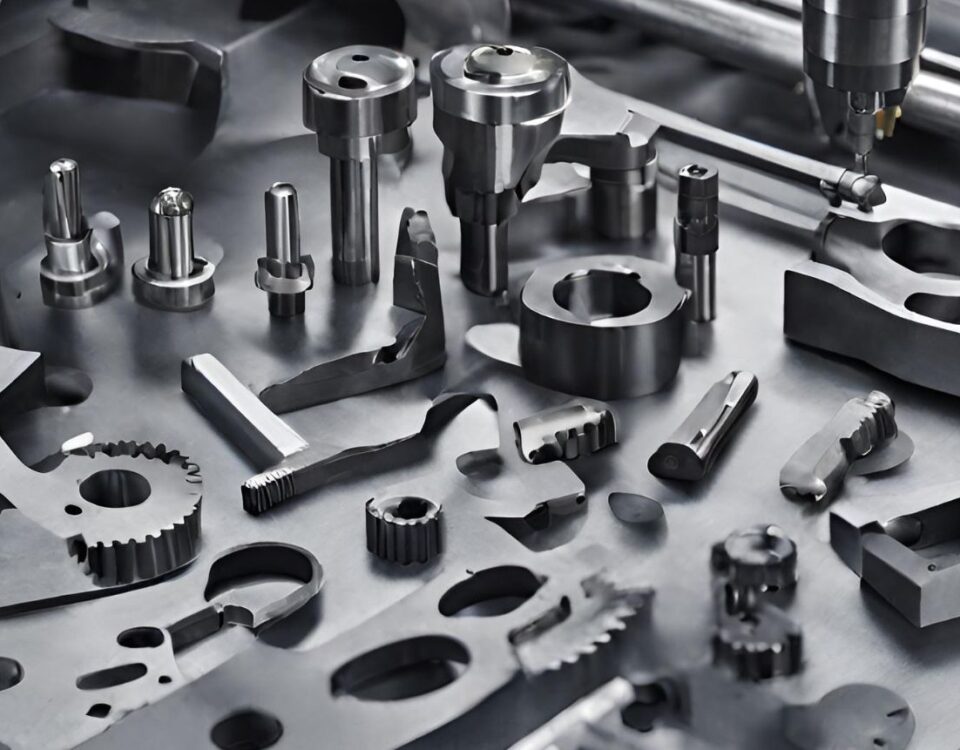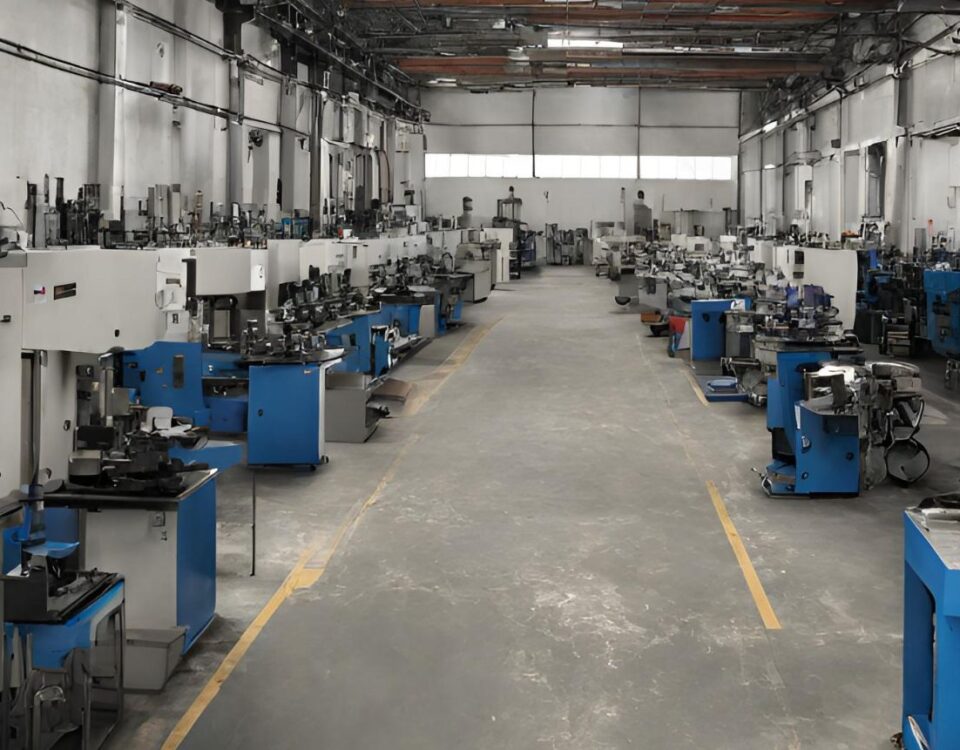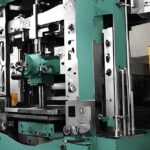
The Artistry and Applications of Custom Metal Stamping
19 March 2024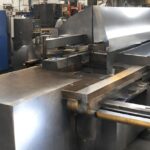
The Art of Metal Fabrication: Unveiling the Secrets Behind Precision Engineering and Timeless Craftsmanship
26 March 2024The Ultimate Guide to Stainless Steel Parts: Everything You Need to Know
Stainless steel parts are not only durable and resistant to corrosion, but they also offer a polished and sleek appearance that makes them popular in a wide range of industries. Whether you're a manufacturer, engineer, or simply interested in learning more, this ultimate guide has everything you need to know about stainless steel parts.
From the properties and benefits of stainless steel to its various grades and finishes, you'll gain a comprehensive understanding of this versatile material. Discover the different types of stainless steel parts, their applications, and how to choose the right grade for your specific project.
Explore the manufacturing processes involved in creating stainless steel parts, such as forging, casting, and machining, and learn about the importance of heat treatment and surface finishing. With expert tips on maintenance and care, you'll ensure your stainless steel parts remain in pristine condition and continue to perform at their best.
Whether you're designing a new product, seeking replacement parts, or simply want to expand your knowledge, this guide will empower you to make informed decisions and leverage the advantages of stainless steel parts in your industry.
Properties and Characteristics of Stainless Steel
Stainless steel is a unique metal alloy known for its remarkable properties and characteristics. It is primarily composed of iron, with a minimum of 10.5% chromium content, which creates a protective layer on the surface known as chromium oxide. This layer is responsible for the material's corrosion resistance, making stainless steel ideal for applications where exposure to moisture and harsh environments is a concern.
In addition to its corrosion resistance, stainless steel is also known for its high strength, making it suitable for heavy-duty applications. It has excellent heat resistance, allowing it to maintain its structural integrity even at high temperatures. Stainless steel is also hygienic and easy to clean, making it popular in industries such as food processing and medical equipment.
Another notable property of stainless steel is its aesthetic appeal. The polished and sleek appearance of stainless steel gives it a modern and professional look, making it a preferred choice for architectural and decorative applications. Its versatility and durability make it a reliable choice for a wide range of industries, including automotive, aerospace, construction, and more.
Types of Stainless Steel Grades
Stainless steel comes in various grades, each with its own unique properties and applications. The most common grades of stainless steel include:
- Austenitic Stainless Steel: This is the most widely used type of stainless steel due to its excellent corrosion resistance and formability. It contains high levels of nickel and chromium, making it suitable for a wide range of applications, including kitchen appliances, pipelines, and chemical processing equipment.
- Ferritic Stainless Steel: Ferritic stainless steel is known for its high resistance to stress corrosion cracking and its magnetic properties. It contains high levels of chromium and low levels of carbon, making it ideal for applications where both corrosion resistance and magnetic properties are required, such as automotive exhaust systems and architectural applications.
- Martensitic Stainless Steel: Martensitic stainless steel is known for its high strength and hardness. It contains higher levels of carbon than other stainless steel grades, which allows it to be heat treated to achieve its desired mechanical properties. Martensitic stainless steel is commonly used in applications such as knives, tools, and turbine blades.
- Duplex Stainless Steel: Duplex stainless steel is a combination of austenitic and ferritic stainless steels. It offers a good balance of strength and corrosion resistance, making it suitable for applications in the chemical, petrochemical, and marine industries. Duplex stainless steel is also known for its high resistance to pitting and crevice corrosion.
- Precipitation Hardening Stainless Steel: Precipitation hardening stainless steel, also known as PH stainless steel, is characterized by its high strength and excellent corrosion resistance. It can be heat treated to achieve even higher strength levels, making it suitable for applications in the aerospace and nuclear industries.
Each grade of stainless steel has its own specific advantages and limitations, so it's important to choose the right grade based on the requirements of your project.
Common Applications of Stainless Steel Parts
Stainless steel parts find applications in a wide range of industries due to their unique properties and versatility. Some common applications include:
- Automotive Industry: Stainless steel parts are used in various components of vehicles, such as exhaust systems, mufflers, and decorative trims. The corrosion resistance and high-temperature performance make stainless steel suitable for these applications.
- Food Processing Industry: Stainless steel is widely used in the food processing industry due to its hygienic properties, corrosion resistance, and ease of cleaning. It is used in equipment such as tanks, conveyors, and food preparation surfaces.
- Construction Industry: Stainless steel is used in construction for its strength, durability, and aesthetic appeal. It is commonly used in architectural features, handrails, cladding, and structural components.
- Medical and Pharmaceutical Industry: Stainless steel's corrosion resistance and biocompatibility make it ideal for medical implants, surgical instruments, and pharmaceutical equipment.
- Aerospace Industry: Stainless steel parts are used in aircraft components, such as exhaust systems, fasteners, and structural components, due to their high strength, heat resistance, and corrosion resistance.
These are just a few examples of the many applications where stainless steel parts play a crucial role. The versatility, durability, and aesthetic appeal of stainless steel make it a popular choice across various industries.
Benefits of Using Stainless Steel Parts
The use of stainless steel parts offers numerous benefits that make it an attractive choice for various applications. Some key advantages include:
- Corrosion Resistance: Stainless steel's resistance to corrosion, tarnishing, and staining makes it ideal for applications in harsh environments or where exposure to moisture is common. This property ensures the longevity and reliability of stainless steel parts.
- Strength and Durability: Stainless steel is known for its high strength and durability, making it suitable for applications that require robust and long-lasting components. It can withstand heavy loads, extreme temperatures, and mechanical stresses without compromising its structural integrity.
- Aesthetic Appeal: Stainless steel parts offer a polished and sleek appearance that adds an aesthetic appeal to products and structures. The smooth surface finish and luster of stainless steel make it a popular choice for architectural and decorative applications.
- Hygienic Properties: Stainless steel is easy to clean and maintain, making it suitable for applications where hygiene is crucial, such as in the food processing and medical industries. Its non-porous surface prevents the growth of bacteria, ensuring a safe and sanitary environment.
- Recyclability: Stainless steel is a highly recyclable material, making it an environmentally friendly choice. It can be melted down and reused without any loss of properties, reducing the demand for new raw materials and minimizing waste.
These benefits make stainless steel parts a cost-effective and sustainable choice for a wide range of applications, providing long-term value and performance.
Manufacturing Processes for Stainless Steel Parts
The manufacturing processes involved in creating stainless steel parts are crucial in determining the quality, strength, and precision of the final product. Some of the common manufacturing processes for stainless steel parts include:
- Forging: Forging is a process where stainless steel is shaped by applying compressive forces through the use of dies and hammers. This process helps in improving the grain structure of the material, resulting in enhanced strength and mechanical properties.
- Casting: Casting is a process where molten stainless steel is poured into a mold to solidify and take the desired shape. This process allows for the production of complex shapes and intricate designs. It is commonly used for large and bulk production of stainless steel parts.
- Machining: Machining involves the removal of material from stainless steel parts using various cutting tools, such as lathes, mills, and drills. This process helps in achieving precise dimensions, smooth surfaces, and intricate details. Machining is commonly used for producing custom or specialized stainless steel parts.
- Welding: Welding is a process where stainless steel parts are joined together using heat and pressure. It is commonly used to create strong and permanent connections between stainless steel components. Different welding techniques, such as TIG (Tungsten Inert Gas) welding and MIG (Metal Inert Gas) welding, are employed based on the specific requirements of the project.
The choice of manufacturing process depends on factors such as the complexity of the part, required strength and precision, and the desired production volume. Each process has its own advantages and considerations, and it is essential to choose the most suitable process to ensure the quality and functionality of the stainless steel parts.
Factors to Consider When Choosing Stainless Steel Parts
When choosing stainless steel parts for your project, it is important to consider several factors to ensure optimal performance and longevity. Some key factors to consider include:
- Corrosion Resistance: Assess the level of corrosion resistance required for the specific application. Different grades of stainless steel offer varying degrees of corrosion resistance, so it is crucial to select the appropriate grade based on the environmental conditions and exposure to corrosive elements.
- Strength and Mechanical Properties: Evaluate the strength and mechanical properties needed for the application. Consider factors such as load-bearing capacity, impact resistance, and temperature resistance. Different grades of stainless steel offer varying levels of strength and mechanical properties, so choose the grade that best aligns with the requirements of your project.
- Aesthetic Requirements: Consider the desired appearance and finish of the stainless steel parts. Determine whether a polished or brushed finish is preferred and whether any additional surface treatments or coatings are required for enhanced aesthetics or protection against staining or scratching.
- Cost and Budget: Evaluate the cost of stainless steel parts and compare them with alternative materials. While stainless steel may have a higher upfront cost, its durability and longevity often make it a cost-effective choice in the long run. Consider the overall benefits and lifespan of stainless steel parts to make an informed decision based on your budget.
- Compatibility with Other Materials: If the stainless steel parts will be used in conjunction with other materials, consider their compatibility. Some materials may cause galvanic corrosion when in contact with certain grades of stainless steel, so it is important to choose materials that are compatible to avoid potential issues.
By carefully considering these factors, you can select the most suitable stainless steel parts for your project, ensuring optimal performance and longevity.
Maintenance and Care of Stainless Steel Parts
Proper maintenance and care are essential to ensure the longevity and performance of stainless steel parts. Here are some expert tips to keep your stainless steel parts in pristine condition:
- Regular Cleaning: Clean stainless steel parts regularly to remove dirt, fingerprints, and other contaminants. Use mild soap or detergent with warm water and a soft cloth or sponge. Avoid using abrasive cleaners or scrub brushes that can scratch the surface.
- Avoid Harsh Chemicals: Avoid using harsh chemicals, such as bleach or chlorine, on stainless steel parts as they can cause damage or discoloration. If needed, use stainless steel-specific cleaners or natural cleaning solutions, such as vinegar or lemon juice, for tougher stains or deposits.
- Prevent Scratches: Minimize the risk of scratches by using non-abrasive cleaning tools and avoiding contact with rough surfaces or abrasive materials. Consider using protective covers or pads when placing stainless steel parts on hard surfaces.
- Passivation: Passivation is a process that enhances the corrosion resistance of stainless steel parts. It involves the removal of any free iron or contaminants from the surface of the stainless steel, followed by the formation of a passive oxide layer. Consult with experts in passivation to ensure proper treatment of your stainless steel parts.
- Regular Inspections: Regularly inspect stainless steel parts for signs of corrosion, staining, or damage. Address any issues promptly to prevent further deterioration. If necessary, consult with professionals for repairs or maintenance.
By following these maintenance and care tips, you can extend the lifespan of your stainless steel parts and maintain their optimal performance and appearance.
Finding Reliable Suppliers of Stainless Steel Parts
Finding reliable suppliers of stainless steel parts is crucial to ensure the quality, reliability, and timely delivery of your products. Here are some key considerations when searching for suppliers:
- Quality Assurance: Look for suppliers who have a proven track record of providing high-quality stainless steel parts. Consider their certifications, quality control processes, and adherence to industry standards.
- Experience and Expertise: Choose suppliers with extensive experience and expertise in manufacturing stainless steel parts. Ensure that they have the necessary knowledge and capabilities to meet your specific requirements.
- Customization and Flexibility: Depending on your project's needs, look for suppliers who offer customization options and flexibility in production. This will allow you to tailor the stainless steel parts to your exact specifications.
- Timely Delivery: Timely delivery is crucial to meet project deadlines. Evaluate the supplier's production capacity, inventory management, and shipping capabilities to ensure timely delivery of your stainless steel parts.
- Customer Reviews and References: Read customer reviews and seek references from other clients who have worked with the supplier. This will give you insights into their reputation, reliability, and customer service.
By conducting thorough research and due diligence, you can find reliable suppliers of stainless steel parts who can meet your specific requirements and deliver high-quality products.
Conclusion: The Versatility and Importance of Stainless Steel Parts
Stainless steel parts are a fundamental component in various industries, offering exceptional properties, durability, and aesthetic appeal. From its corrosion resistance to its strength and hygienic properties, stainless steel has become an essential material for applications ranging from automotive and construction to food processing and medical equipment.
Understanding the different grades, manufacturing processes, and maintenance requirements of stainless steel parts is crucial in making informed decisions and maximizing their benefits. By choosing the right grade, considering key factors, and properly maintaining stainless steel parts, you can ensure their longevity, performance, and value.
Whether you're a manufacturer, engineer, or end-user, this ultimate guide provides you with the knowledge and insights to leverage the advantages of stainless steel parts in your industry. By harnessing the versatility and importance of stainless steel parts, you can drive innovation, enhance product quality, and contribute to the sustainable development of your industry.

